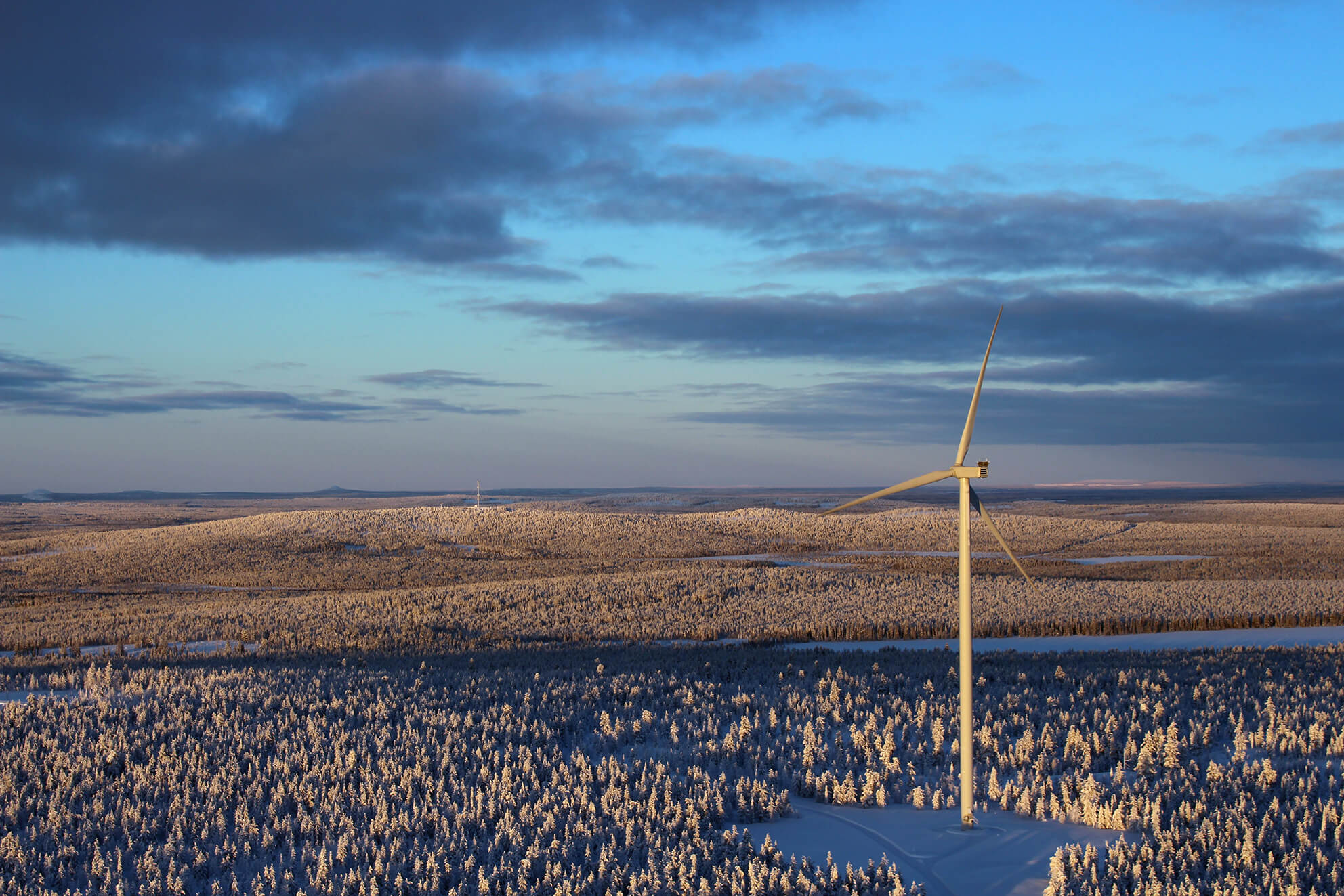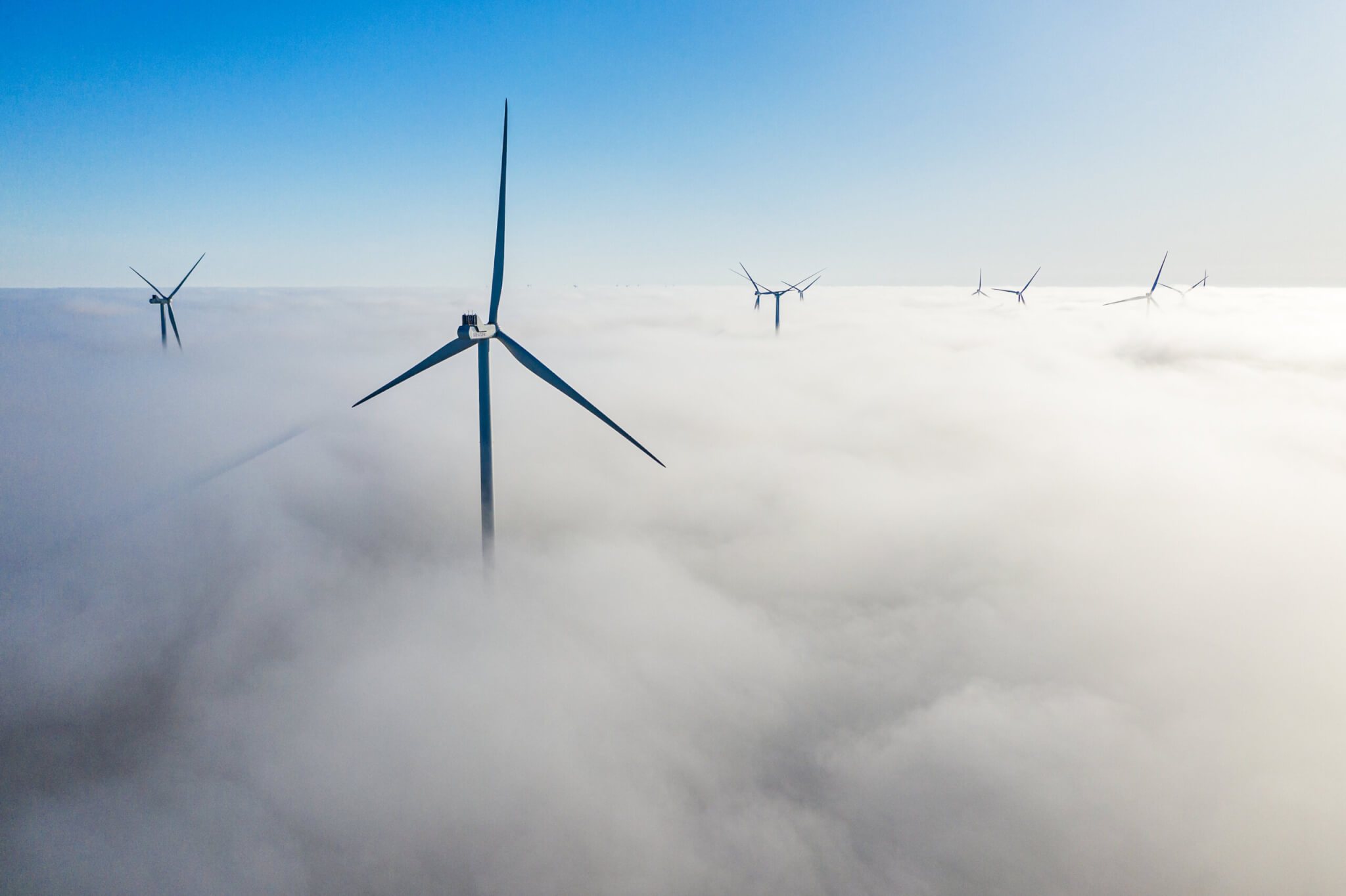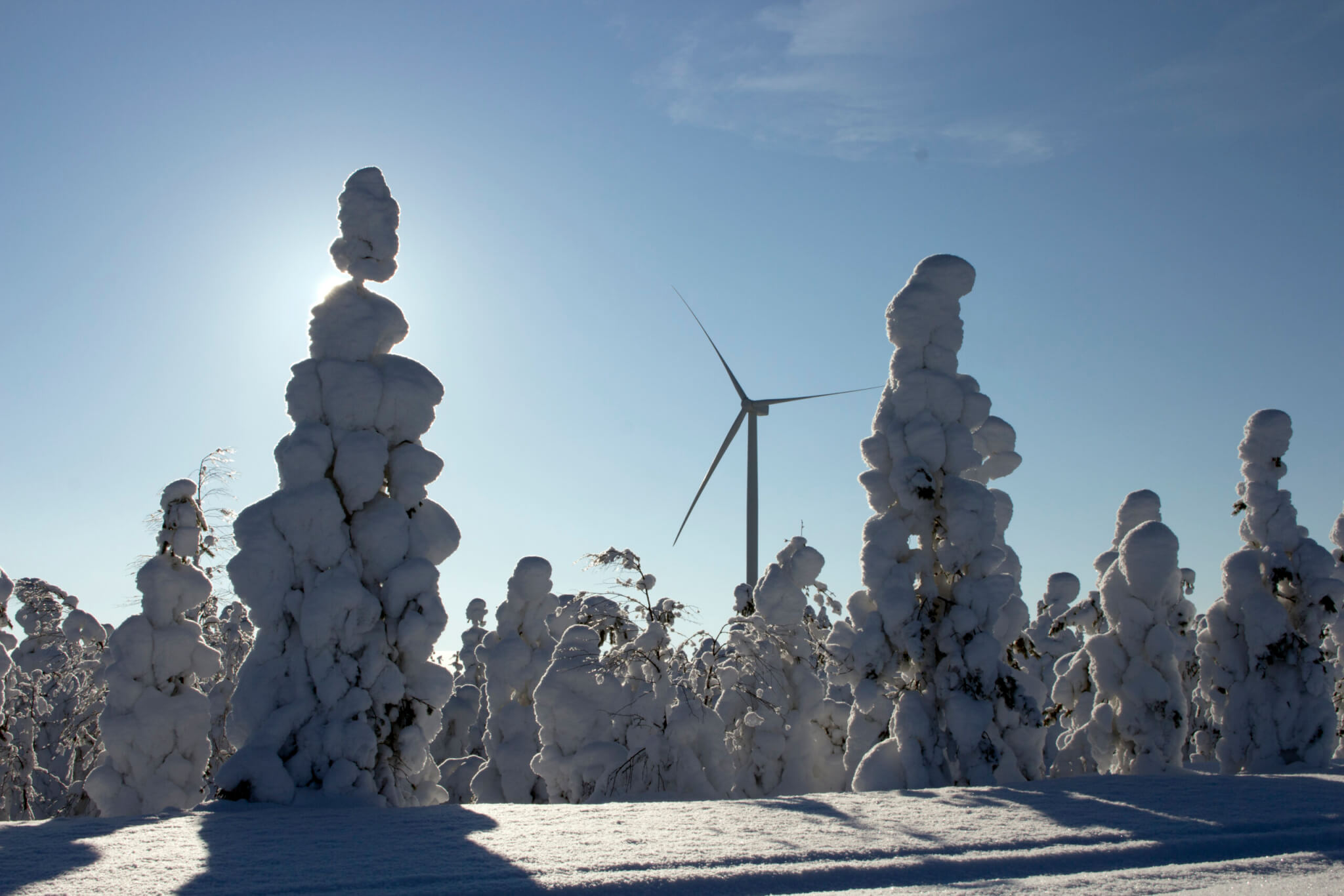
Initial stage
Initial stage critical issues
In addition to wind conditions, there are several general issues to be taken into account when planning a wind power project in Finland, with some minor variation in the different parts of the country. The critical issues can be divided into the following main categories:
- Land use of the area and its surroundings: distance to housing, distance to airports (compliance with flight security), valid land use plans (see chapter 3.1), access to site, possible reindeer herding, distance to roads and railways, military, and weather radars etc.
- Environmental issues: presence of endangered species in the area, nests of birds of prey, distance to protected areas etc.
- Grid connection possibilities
- Land lease agreements: transferability, registration with bankable priority, sector specific terms.
Check the wind conditions
Some indication of the available wind potential can be gained with the help of the Finnish Wind Atlas. There are also several commercial wind modelling providers. However, an on-site wind measurement campaign is necessary in the early phase of project development. A bankable project usually requires 1-2 years of on-site mast measurements. Measurements should be planned taking into account the icing conditions that occur during the winter time. Knowledge on local conditions, such as impact of forests and near-by wind farms, needs to be studied as part of wind measurements.
In the later stages of a wind power project, on-site environmental studies, as well as detailed noise and shadow flicker modelling, are needed.. Some projects may need modelling of their impact on military radars. As the military has a veto rights, it is advisable to seek military acceptance in the very early stages of the project. Further, also grid connection is described among other permits, but as another go or no-go issue, it is good to study the subject before major environmental studies and spatial planning are carried out.

Permitting process in Finland
The steps described on this page present the steps involved in the permitting process of a wind power project in Finland. Depending on the project, separate issues can proceed in different order or in different phase of a project. All of the projects do not necessarily need all of the permits, e.g. usually the water permit is not needed for an onshore wind farm. Below, the different phases of the project are described in more detail.
Acquisition
- Military radar statement
- Flight obstacle permit
- Applied from Traficom – [only in Finnish]
Master planning and (environmental impact assessment, EIA)
- Statement on need of EIA from ELY center (ELY center = Centre for Economic Development, Transport and the Environment)
- If the project size is above 45 MW or 10 WTGs, EIA is always required
- In other cases, ELY makes the decision whether EIAis needed or not
- STR – Suunnittelutarveratkaisu (Need for planning decision)
- In small projects instead of Master Plan (very rare)
- Applied from the municipality
Master planning and (environmental impact assessment)
- YVA – Ympäristövaikutustenarviointi (EIA – Environmental Impact Assessment)
- Required by local ELY-center, usually made by a consultant
- Needed for projects larger than 10 turbines or total capacity over 45 MW
- Is some cases ELY-center may require EIA also for smaller projects (sensitive environment or estimated that the environmental impacts are similar than in a wind farm with then 10 turbines)
- Master Plan
- Municipal council decides whether to start it and whether to accept the result
- Municipality accepts the maker (usually a consultant)
- Master plan contract usually made with the municipality
- The municipality may charge the costs from the project developer
Building permit
- Building permit for met mast
- Applied from the municipality’s building inspection
- Building permit for WTG and substation
- Applied from the municipality’s building inspection
- Can be granted after the municipality has accepted the master plan even though the plan is not yet legally valid. The construction cannot be started before both the master plan and the building permit are legally valid.
- Needed attachments: updated noise and flickering modeling results, modelling of the impacts on the scenery, If EIA done the ELY-centre statement on the EIA, etc.
- Environmental permit
- Applied from the municipality’s environmental inspector
- Needed if the wind farm may cause unreasonable noise, flickering etc.
- Previously made nature-, noise- etc. assessments (during MP and possibly EIA) needed as attachments
- Water permit
- Applied from Regional State Administrative Agencies (AVI)
- Required if project has impacts on water systems (very rare onshore, always needed offshore)
Permitting of the Grid Connection
- Fingrid or local grid operator
- Power line research permit (Maanmittauslaitos)
- Project permit according to the electricity market act (Energiavirasto, Työ- ja elinekeinoministeriö 588/2013)
- Pre-takeover contracts for the power line area
- Power line expropriation permit (Maanmittauslaitos / TEM)
Construction
- Transport permit
- Needed for special transports on public roads. This is usually handled by the transport company
- In case of doubt, they will make a pre-decision
- Junction permit
- Applied from Pirkanmaan ELY-center for each new junction/change of usage type on public roads
- Cable permit
- Applied from local or Pirkanmaan ELY-center for installing underground cables along public roads
Flight obstacle permit
-
- Applied from Traficom
- Soil excavation
- Only needed if the project developer has own borrow pits.
- Applied from the municipality
- Destruction permit for archaeological sites (muinaismuistolain kajoamislupa)
- Required for removing ancient grave sites etc.
- Very rare

Spatial planning
Finland’s land use planning system, as defined in the Land Use and Building Act (132/1999), is based on a three-level planning hierarchy. The basic principle of the planning system is moving down the hierarchy towards more specific plans, so that the higher-level plan guides the lower. This means that a lower-level master plan may deviate from a higher plan only as an exception.
The regional land use plan (maakuntakaava) is a generic plan, which guides development on the regional level. It has to promote the national land use guidelines, which provide generic targets for good land use policies. The plan is prepared and approved by the regional councils. Most of the regional plans include areas that are designated for wind power development. The regional plan provides a general indication of areas suitable for large-scale wind power development. Any wind power project of regional importance should, as a ground rule, be based on regional land use planning. Usually, the regional importance is defined as 10 or more wind power turbines, but this figure differs between the Regions. Detailed land use planning may not conflict with the regional plan.
The municipality supervises
The two municipal land use plans are the local master plan (yleiskaava) and the detailed plan (asemakaava). Both the local master plans and detailed plans are drafted and approved by the municipalities. In practice, the plans are generally prepared by consultants and the developer is responsible for the planning costs, but the municipality is always the supervising and approving party. However, it should be noted that the approval is a political decision, which means that the municipality is not obliged to approve the plan. The project cannot be taken forward unless the approval has been obtained.
There is specific regulation in force which allows the local master plan to be drafted specifically for wind power construction. The wind power local master plan only covers the project area and allows the building permits to be granted directly based on the master plan.
The number of turbines is an influencing factor
A detailed plan for a wind farm may be necessary in densely populated areas or other areas with specific needs for detailed consideration of the coordination of different land use purposes in the area.
Building permits for the construction of wind power turbines may, in some cases, be granted without land use planning. Land use planning may be deemed unnecessary when only a few turbines are planned in a specific area. Building permits without land use planning can be granted based on a so-called deviation permit, which allows the municipality to deviate from any land use purpose defined in a general or detailed plan by a planning decision (“suunnittelutarveratkaisu”), which requires more preconditions for the building to be considered than in consideration of a regular building permit. These may especially be granted in areas constructed and designated for industrial use or harbors. As a counterweight to the benefit of a shorter time for the permitting phase, deviation permits, and planning decisions generally face a higher risk of successful appeals.

Environmental impact assessment (EIA)
The obligation to conduct an environmental impact assessment is prescribed for in the Act on Environmental Impact Assessment Procedure (468/1994). All wind power projects that involve a minimum of ten wind power turbines or a total power generation capacity of 45 MW or more must undergo the EIA procedure. Also, projects falling below this threshold may require an EIA whenever the regional state authority considers that negative environmental impacts may be significant, or, for example, if there are other wind farms in the vicinity. It is common practice to seek a statement of the need of an EIA from the regional state authority also for the projects falling below the EIA limit.
The EIA procedure consists of two phases. In the first phase, usually called EIA program, a report containing a description of the project and a plan of the impact assessment is drafted. It is to be noted that also the grid connection should be considered in the EIA. In the second phase, usually called EIA report, the relevant impact assessments are made, and their results reported.
Regional state authority oversees the procedure
It is the project developer’s responsibility to produce the assessments and reports, but in practise these are generally drafted by third party consultants.
Both the need for an EIA and the EIA procedure itself are overseen by the regional state authority (Centre for Economic Development, Transport, and the Environment, also known as the ELY-centre).
Since 2017, local master plan (yleiskaava) can be carried out including the EIA within the master plan. The requirement is that the planned wind farm is in the area of only one municipality, and the authorities and project developer all agree on the joined process. In the joined process the municipality oversees the process and the Centre for Economic Development, Transport, and the Environment participated the project. Also in the case of the joint process two different documentation is needed, one covering the EIA report and other one the spatial plan.
The EIA is not a permit, but it is prerequisite for approving plans and permits. It is also to be noted that, whether or not an EIA is required, the land-use planning will require extensive studies on e.g. noise and flicker, nature values, endangered species such as flying squirrels, nesting and migrating birds, bats, impact on relics, reindeer herding (where applicable; app. 1/3 of the country area) as well as the impact on the landscape.

Contents of the building permit
The building of a wind turbine always requires a building permit or an action permit. Small wind turbines mainly serving private domestic use can be implemented with an action permit.
The local building control authority decides on the building permit application for a wind turbine in the same way as a permit matter for any other building. The requirements for granting the permit are laid out in the Land Use and Building Act.
A building permit may be applied for after the municipality has accepted the plan for the project. However, the plan need not be legally valid. In such a case, the building permit is granted as conditional and it will not enter into force until after the plan has taken legal effect.
Measurements of the turbine is needed
If the wind power project is subject to the EIA procedure, section 132 of the Land Use and Building Act shall be applied to the project. By virtue of the section, an assessment report according to the Act on Environmental Impact Assessment Procedure and a reasoned conclusion made by the competent authority on the assessment report shall be attached to the permit application. In addition, a water permit, an environmental permit or a flight obstacle permit may also be attached to the application if these have already been granted for the wind turbine. However, these permits are not required before the decision regarding the building or action permit has been taken. According to section 134 of the Land Use and Building Act, the decision on the building permit matter may be postponed until any environmental permit matter has been settled.
It is not necessary to specify the output of the wind turbine in the building permit stage. However, the application must include the maximum measurements of the turbine and the output noise level of the designed turbine. Other attachments to the building permit applications can also include updated calculations for noise and shadow flicker modelling to prove that the turbines planned for the area meet the requirements of the plan. The calculations for noise and shadow flicker modelling must always be performed again whenever the turbine model is specified also after the building permit has been granted.
Modelling of the noise and shadow flicker spread of the wind turbine before the turbines are built
The building project must comply with the wind power master plan, the local detailed plan or a granted decision concerning the need for planning. In the building permit process, it is ensured that the impacts of the wind turbine, for example, noise, shadow flicker and landscape impacts, correspond with the impacts specified in the plan or the decision concerning the need for planning. However, the type of wind turbine may change before the building work is started, and therefore it is advisable that the plan or the decision concerning the need for planning and the building permit decision include a provision that the noise and shadow flicker modelling must be carried out again before the building work is started if the turbine type changes from the type that was originally used as a basis for the modelling. This way it is ensured that the noise or shadow flicker values will not be exceeded in the nearby properties.

Other permits for wind turbines
Environmental and water permits
According to the Environment Protection Act (527/2014) a wind power turbine does not automatically require an environmental permit but, however, a discretionary need for a permit may become applicable. An environmental permit is required, should there be a risk that the planned or constructed wind turbine or wind farm cause an unreasonable burden to the residents in the area such as noise and/or flicker effects.
The guiding principle for wind power development is that wind farms should be situated far enough from residential areas, whereupon the environmental permit is unnecessary. However, some municipalities require the environmental permit on regular basis.
The environmental permit is, in practice, the only administrative tool available for the authority to restrict the operation of a wind farm and to obligate the operator to monitor and report environmental impacts of the operations. The permit may be granted for a wind farm or for a single turbine, depending on the circumstances. The main rule is that any operations with simultaneous impacts should be assessed as a whole.
A wind power project will require a so called water permit in accordance with the Water Act (587/2011), should the project have an impact on the water system. A water permit is always required for offshore wind power projects.
Aviation obstacle permit
In order to ensure the undisturbed aviation, permission is required for erecting turbines higher than 60 meters. This obligation is stipulated in the Aviation Act (864/2014). The project developer must apply the obstacle permit from the Finnish Transport Safety Agency (Traficom). Traficom will ask the statements from the relative stakeholders.
Defence force statement
The construction of a wind power project requires an approving statement from the Finnish Defence force. The statement is based on how the project will affect the operations of the Defence force and especially the surveillance sensors and radar systems. The Defence force determines how the project will affect their operations. Should the planned wind farm have adverse effects on the defence force’s surveillance systems, weapon platforms, training and operation of troops and equipment on the garrison, depot, training and firing range areas, the Defence force may give a negative statement of the project. If the statement is negative the project cannot be continued. The statement cannot, in practice, be challenged in the courts.
Read more about the wind farm consultation process.
In Finland there is currently one case, in the Bay of Bothnia area, where the Defence Force’s surveillance systems have been rearranged in order to enable the construction of a number of wind farms. This area is regulated by the Act on wind power compensation areas (490/2013) which entered into force on 1 July 2013. The area of Bay of Bothnia is at the moment the only area considered as a compensation area by the Act. Projects situated on a compensation area are subject to a fee paid by turbine by the electricity producer. The fee compensates for the adverse effects on Defence force operations. No statement from the Defence force will be required for projects on compensation areas and construction will be possible even if the statement had been previously negative.
Dismantling permit (MRL)
When dismantling a wind power turbine, the possible need for a dismantling permit according to the Land Use and Construction Act (MRL), which is mandatory in zoned wind power areas, must be taken into account. According to Section 139 of the MRL, the distmantling permit application must clarify the organization of the dismantling work and the conditions for handling the generated construction waste appropriately and for the use of usable building parts.